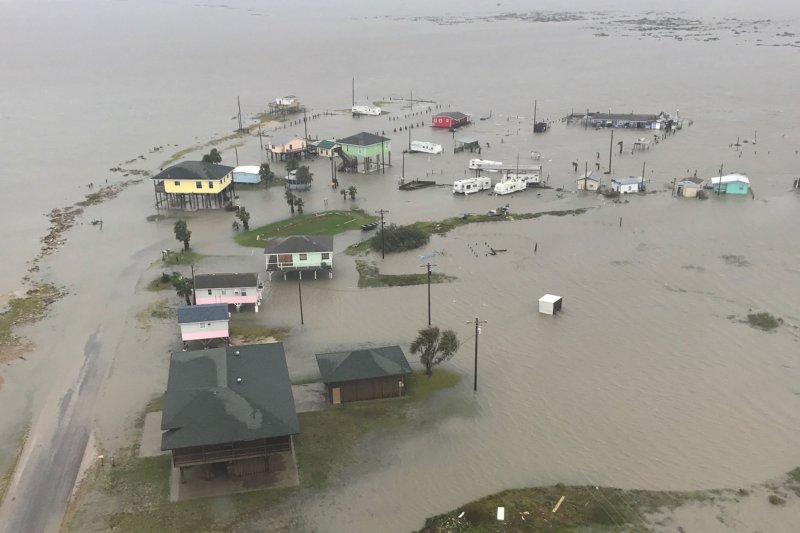Hurricane Harvey was the most extreme weather event to hit the United States during the last decade, according to a new list published in the periodical Weatherwise. Photo by Texas National Guard/UPI |
License Photo
Feb. 18 (UPI) -- Hurricane Harvey was the most extreme weather even to affect the United States during the last decade, according to a new list published this week by the periodical Weatherwise.
To compile the top-ten list, retired meteorologist Douglas Le Comte, who previously worked for the NOAA's Climate Prediction Center, analyzed the cost of destruction caused by each weather event, as well as death and injury tolls. Le Comte also considered the size of each disaster, as well as the meteorological rarity of the different weather events.
In 2017, Hurricane Harvey brought unprecedented rainfall totals to Houston and the surrounding region. The heavy rains lasted more than a week and triggered flooding across an area of southeast Texas roughly the size of the Netherlands.
According to Le Comte's analysis, the category four storm was the wettest on record and the second most expensive in U.S. history, causing $125 billion in damages. At least 68 people were killed, mostly by drowning.
According to the list, the second most extreme weather event to hit the U.S. during the last decade was Hurricane Sandy, followed by Hurricane Maria, Hurricane Irma, and droughts and heatwaves that struck during the summer of 2012.
The back half of Le Comte's list features the record tornado outbreak that touched down across the Southeast in 2011, 343 twisters in a matter of weeks, as well as the California wildfires that burned hundreds of thousands of acres, killed 85 people and destroyed 18,800 homes.
Le Comte, who has been compiling extreme weather lists for Weatherwise for several years, told UPI via email that he didn't consider the relationship between climate change and extreme weather.
"There is no motivation to alarm anyone, and one has to be very careful in linking individual events to climate change, but given the continued rise in global temperatures, there is heightened interest in extreme weather," he said.
"I did not want to emphasize climate change, given the complexities of doing so, but the average number of annual billion dollar weather disasters in the U.S. during this past decade is around 14, and that is double the annual number during the first decade of this century," Le Comte said. "And global sea levels have risen by more than 3 inches since 1993, and there is no reason to think that seas will stop rising in the near future."
Previous studies have determined that climate change amplified Hurricane Harvey, and a mounting body of evidence suggests the climate change is likely to increase the frequency and severity of extreme weather events.
If Le Comte's list is proof of anything, he said, it's proof that policy makers need to do a better job of protecting vulnerable communities and keeping people out of harm's way.
"Government insurance policy should not inadvertently encourage people to live near the ocean or in river valleys," Le Comte said. "And construction should take into account increased risk from flooding and rising sea levels. And we need new calculations as to what constitutes a 100 and 500 year flood."















